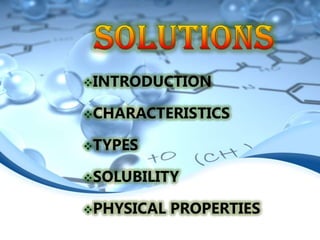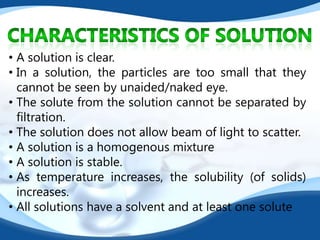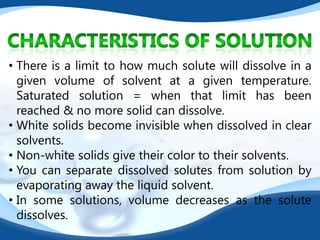A solution is formed when a solute dissolves completely and uniformly throughout a solvent. There are three main types of solutions: gaseous solutions where gases are dissolved in other gases; liquid solutions where solids, liquids or gases are dissolved in liquids; and solid solutions where solids are dissolved in other solids. The solubility of a solution depends on the temperature - as temperature increases, more solute can typically dissolve.








